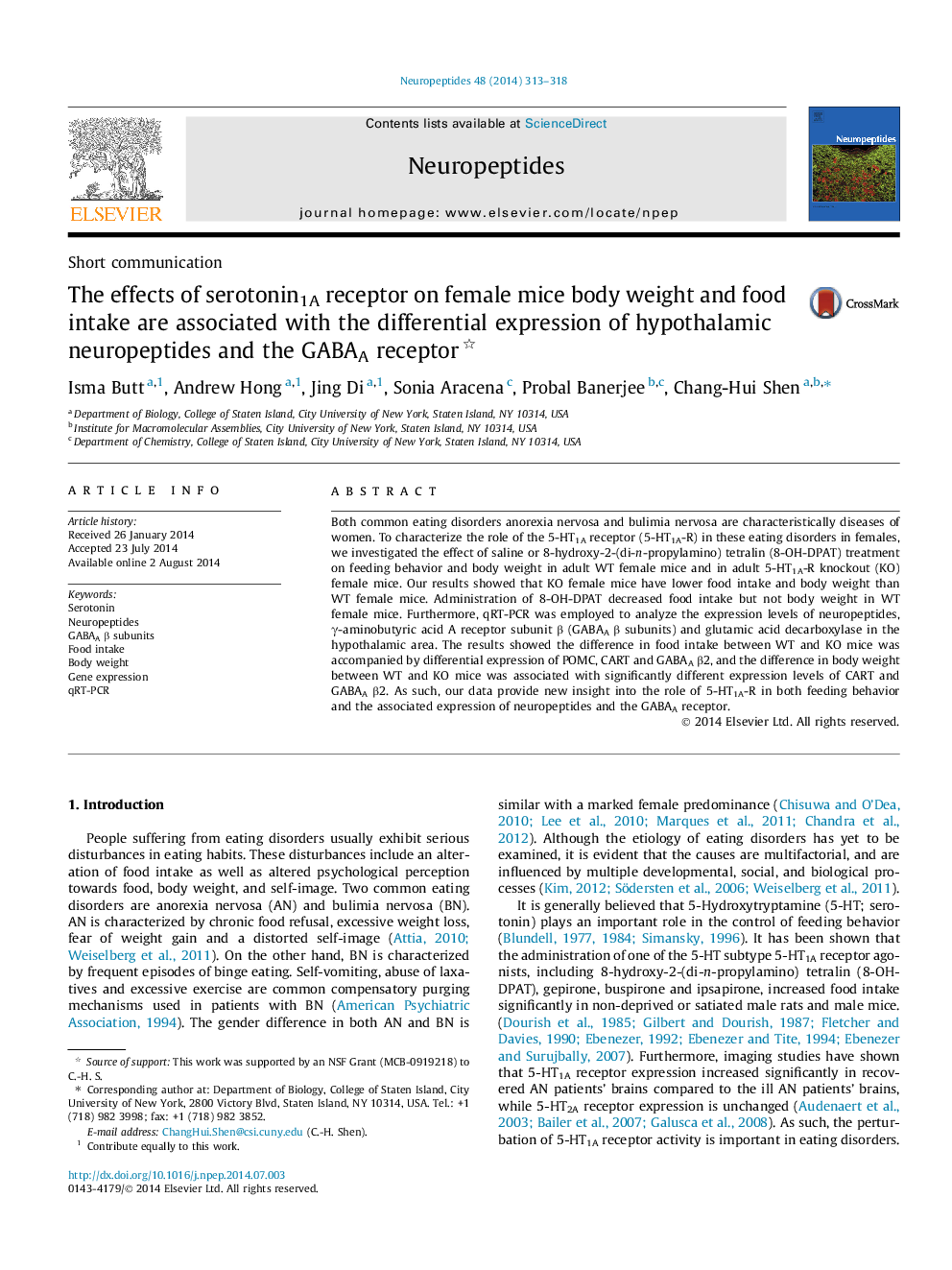| Article ID | Journal | Published Year | Pages | File Type |
|---|---|---|---|---|
| 2808038 | Neuropeptides | 2014 | 6 Pages |
•We examine the influence of serotonin 5-HT1A receptor on feeding behavior.•Food intake study shows that 5-HT1A receptor knockout mice eat less.•The difference might be attributed to the expression of POMC, CART and GABAA β2.•The body weight of 5-HT1A receptor knockout mice is significant lower than WT mice.•The body weight difference might be relevant to the expression of CART and GABAA β2.
Both common eating disorders anorexia nervosa and bulimia nervosa are characteristically diseases of women. To characterize the role of the 5-HT1A receptor (5-HT1A-R) in these eating disorders in females, we investigated the effect of saline or 8-hydroxy-2-(di-n-propylamino) tetralin (8-OH-DPAT) treatment on feeding behavior and body weight in adult WT female mice and in adult 5-HT1A-R knockout (KO) female mice. Our results showed that KO female mice have lower food intake and body weight than WT female mice. Administration of 8-OH-DPAT decreased food intake but not body weight in WT female mice. Furthermore, qRT-PCR was employed to analyze the expression levels of neuropeptides, γ-aminobutyric acid A receptor subunit β (GABAA β subunits) and glutamic acid decarboxylase in the hypothalamic area. The results showed the difference in food intake between WT and KO mice was accompanied by differential expression of POMC, CART and GABAA β2, and the difference in body weight between WT and KO mice was associated with significantly different expression levels of CART and GABAA β2. As such, our data provide new insight into the role of 5-HT1A-R in both feeding behavior and the associated expression of neuropeptides and the GABAA receptor.
